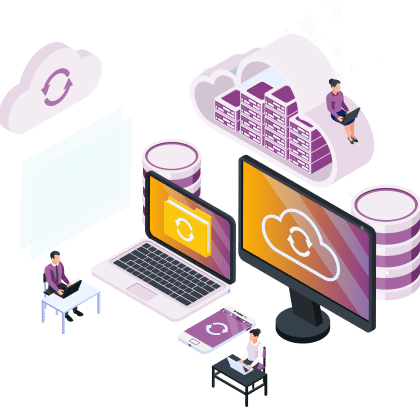AWS Training in Hyderabad
Tech Marshals Academy is one of the Best AWS Training Institute in Hyderabad India. Amazon AWS training by Tech Marshals is designed to help you learn and master the subject with ease.
AWS is today the most preferred web services used on the cloud computing platform. Services like Simple Storage, Elastic Compute Cloud, Virtual Private Cloud are used extensively by industries across verticals for data and application management and business process continuity and scalability. AWS programmers are in constant demand with the ever increasing mobility of the business to the cloud application platforms.
 201 Reviews
201 Reviews ![]() 4025+ Learners
4025+ Learners

AWS Course Content
Cloud Computing
• Introduction cloud computing world
• What is cloud computing
• Cloud delivery models
• Cloud deployment models
• Why AWS
• Advantages of cloud computing
• History of cloud and AWS
• Certification Levels
AWS Overview
• AWS Regions and Availability zones
• Account Basics
• Create an AWS Account
• Tools to access services.
• Navigating the console.
AWS Elastic Compute Cloud
• Introduction to EC2.
• Different instance types.
• Launching and using EC2 Instances.
• EC2 Instance Essentials.
• Creating a Cent OS instance on AWS EC2.
• Creating Amazon Linux instances
• Working with Public and private IP addresses.
• Assigning static IPs using Elastic IPs.
• Cloud init Userdata and metadata.
• Bootstrap scripts
• Control access to instances using Security Groups.
• Ingress and Egress rules in security groups
• Resizing the instances
• EBS Volumes and types.
• Understanding the AWS Storage Types
• AWS Storage and Performances
• Using snapshots for backup.
• Increasing the size of the volumes.
• Backup and restore process of the EC2 instances.
• Adding network interfaces.
• EC2 instance login process and authentication methods
• Logging into instances using key pairs.
• Understanding the Reserved Instances
• EC2 Troubleshooting Scenarios
User data
• Introducing user data for automation
• cloud-init
• Userdata types
• Bootstrap scripts
Amazon Machine Images (AMI)
• Creating custom images on AWS
• Image Id and attributes
• Public vs Private Images.
• Sharing Images to other accounts
• AMI with Web Application
Elastic Load Balancer
• Overview of Elastic Load Balancing.
• Creating ELB from Console.
• Attaching instances to ELB.
• Configuring Protocols and health checks.
• Classic load balancers
• Application load balancers
• Network load balancers
• Creating target groups for application load balancing
• Elb with Web applications
AWS Cloud Watch
• Introduction to CloudWatch monitoring service.
• Alarms
• Events and Metrics
• Monitoring CPU
• Monitoring Memory
• Monitoring Network utilization of different resources.
• Creating notifications.
• Creating a dashboard
Simple Notification Services (SNS)
• Introduction to SNS
• Creating a SNS Topic
• Subscribing to Topic
• Publishing to SNS Topic
• Testing email and SMS functionality.
• Other supported endpoints.
• Notification & Applications
Auto-Scaling
• Overview of auto scaling
• Creating launch configuration.
• Creating auto-scaling group.
• Auto-scaling policies.
• Health checks
• Event monitoring and notifications
• Automation and setting up AMI
• How auto-scaling works
Using CLI
• Installing AWSCli
• Installing CLI on Linux workstations
• Configuring credentials
• AWS CLI syntax
• Creating and managing resource using CLI
• Output formats
• Examples
Database (RDS)
• Introduction to RDS
• RDS Essentials
• Creating RDS instances using AWS console.
• Choosing an RDS engine and version.
• MySQL and Maria dB
• Public vs Private database instances.
• Control access to instances using Security Groups.
• Multi-AZ setup.
• Backup using snapshots
• Parameter Group.
AWS Simple Storage Service (S3)
• Introduction to Simple Storage Server (S3).
• Buckets and Objects.
• Storage classes (default vs reduced redundancy vs Glacier).
• Creating buckets using Console.
• Permissions
• Uploading and downloading data to S3.
• Security and Encrypting
• Building static websites using S3.
• Enable version control on S3.
• Recovering the accidentally deleted data from S3 buckets
• S3 access policies.
• Creating CDN
Storage Glacier and EFS
• Introduction to Glacier and EFS
• Moving data from S3 to Glacier.
• Setting archiving policies on S3.
• Connecting EC2 to EFS
Cloud Front
• Introduction to Content Delivery Networks.
• Overview of Amazon CDN
• Origins and Edge locations
• Configure S3 backend for CloudFront.
• Configure ELB backend from CloudFront.
• Web Distribution
Identity Access Management (IAM)
• What is IAM
• AWS root user permissions
• Access controls using IAM.
• Creating users and roles.
• Creating groups and roles.
• Assigning policies.
• Inline and Managed policies.
• MFA authentication
• Modifying and deleting users/groups and roles
• Loggin IAM as s3
• Using IAM role with EC2
Virtual Private Cloud (VPC)
• Introduction.
• Choosing a network design and CIDR.
• Design a simple network.
• Creating Subnets and setup routing as per the design.
• Using IGW tenable internet access.
• Access controls using Network ACLs.
• Network ACLs vs Security Groups.
• Creating Private connections from data center to AWS.
• Enabling VPC peering between VPCs.
Route53
• Basics of Route53
• Routing policies
• Simple route policy weighted routing policy
• Latency routing policy failover routing policy
• Aliasing records
Automation on AWS
CloudFormation (IaaS)
• Introduction.
• Understanding the template format.
• CloudFormation designer.
• Create a simple CloudFormation template.
• Updating CloudFormation stacks.
• Understanding event.
• Introduction to Cloudformer.
Elastic Beanstalk (SaaS)
• What is Elastic beanstalk
• Understanding the template format.
• Advantages
• Web Application on EB
